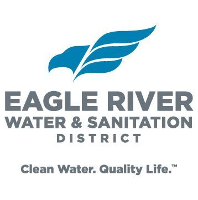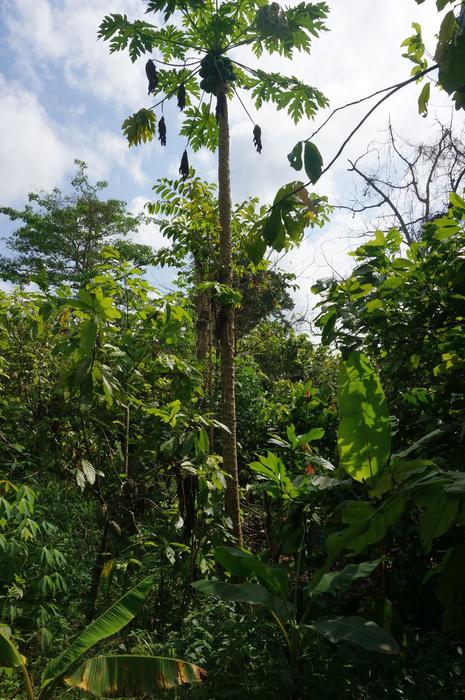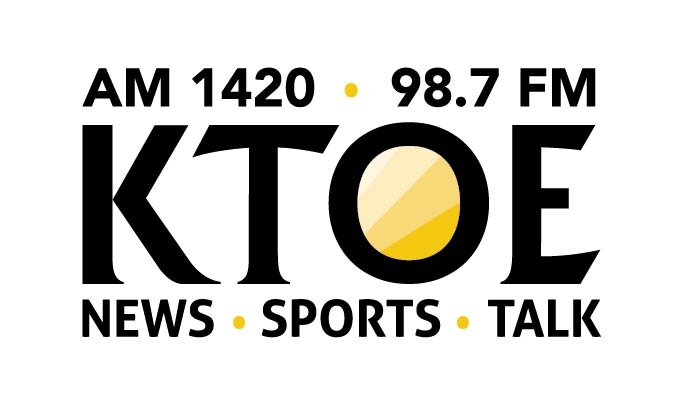Climate Institute Focuses on Local Change with Lasting Impact – Gonzaga University

Report on the Gonzaga Institute for Climate, Water, and the Environment: Contributions to Sustainable Development Goals
Introduction: A Response to Climate Crisis
The 2021 heat dome in the Pacific Northwest, a catastrophic weather event resulting in 157 deaths in Washington state, underscores the urgent need for climate adaptation and mitigation. This event serves as a critical backdrop for the work of Gonzaga’s Institute for Climate, Water, and the Environment, established the same year. The Institute’s mission to promote the flourishing of Inland Northwest communities directly aligns with the United Nations Sustainable Development Goals (SDGs), particularly those concerning climate action, sustainable communities, health, and education.
Advancing SDG 13: Climate Action
The Institute’s entire operational framework is dedicated to SDG 13 (Climate Action), focusing on strengthening resilience and adaptive capacity to climate-related hazards.
H3: Climate Resilience Project
Created in direct response to the 2021 heat dome, this project is a cornerstone of the Institute’s strategy to advance SDG 13. It focuses on collaborative research and community action to mitigate the risks of extreme weather events such as heatwaves and wildfires.
H3: Research and Monitoring
To inform climate action strategies, the Institute conducts extensive research, including:
- Air quality monitoring
- Extreme heat surveys
- Community insight reports
Fostering SDG 4: Quality Education
The Institute champions SDG 4 (Quality Education) by promoting knowledge and skills needed for sustainable development through its climate literacy initiatives.
H3: Climate Literacy Fellows Program
This flagship program embodies the goals of SDG 4 by empowering the next generation as agents of change. Key outcomes include:
- Training and employing 18 Gonzaga University students to become climate educators.
- Delivering high-impact climate science lessons to over 1,700 elementary and middle school students.
- Focusing education on local, tangible climate impacts to enhance understanding and encourage proactive solutions.
H3: Public Engagement and Dissemination
The Institute extends its educational reach to the broader community, having hosted over 2,400 guests at various lectures and events, thereby promoting lifelong learning opportunities for all.
Building SDG 11: Sustainable Cities and Communities
A primary focus of the Institute is to make Spokane a more inclusive, safe, resilient, and sustainable community, in line with SDG 11.
H3: Community Resilience Planning
In collaboration with community partners, the Institute has been instrumental in developing strategic plans to safeguard the urban population against climate-related disasters.
- Drafted the first citywide Extreme Heat Resilience Plan.
- Drafted the first citywide Wildfire Smoke Resilience Plan.
H3: Policy and Infrastructure Improvements
The Institute’s work has led to tangible improvements in urban policy and infrastructure:
- Assisted the Spokane City Council in creating a Heat Health and Safety Ordinance, protecting tenants’ rights to install air conditioning.
- Facilitated nearly half a million dollars in HVAC system improvements for the Northeast Community Center, enhancing the resilience of public infrastructure.
Protecting SDG 3: Good Health and Well-being
Recognizing that climate change is a public health crisis, the Institute’s initiatives actively support SDG 3 (Good Health and Well-being).
H3: Mitigating Environmental Health Risks
The resilience plans for extreme heat and wildfire smoke are critical public health documents designed to prevent deaths and reduce illness. As stated by Spokane Mayor Lisa Brown, “These new resilience plans will save lives.” Additional efforts include:
- A citywide wildfire smoke education campaign to inform residents on how to protect themselves from hazardous air quality.
- Research that provides crucial data for public health interventions during climate-induced events.
Leveraging SDG 17: Partnerships for the Goals
The Institute exemplifies SDG 17 (Partnerships for the Goals) by creating multi-stakeholder collaborations to achieve its objectives.
H3: The Spokane Community Resilience Collaborative
This collaborative is a model partnership for achieving sustainable development. Key partners include:
- The City of Spokane
- Avista Utilities
- The Spokane Regional Health District
- Spokane Regional Clean Air Agency
This partnership ensures that resilience strategies are developed “by the Spokane community, for the community,” leveraging diverse abilities and shared responsibility.
Challenges and Future Outlook
The Institute faces significant challenges, including the potential termination of a historic $19.9M federal grant and reductions in state-level climate funding. Despite these obstacles, the Institute remains committed to its mission. Director Brian Henning affirms, “We have in front of us a multigenerational task… We can and must continue to do as much as we can to address the climate crisis.” This steadfast dedication ensures the continued pursuit of the Sustainable Development Goals for the Inland Northwest region.
Analysis of the Article in Relation to Sustainable Development Goals (SDGs)
1. Which SDGs are addressed or connected to the issues highlighted in the article?
The article highlights several issues that directly connect to multiple Sustainable Development Goals. The analysis identifies the following SDGs as relevant:
- SDG 3: Good Health and Well-being: The article explicitly discusses the deadly impact of extreme weather events, mentioning that the 2021 heat dome “caused at least 19 deaths in Spokane County and 157 across Washington.” It also notes that resilience plans are designed to “save lives, protect our most vulnerable neighbors,” directly linking climate action to public health outcomes.
- SDG 4: Quality Education: A significant portion of the article is dedicated to the Institute’s “Climate Literacy Fellows program.” This initiative, which involves training university students to “deliver high-impact climate science lessons in elementary and middle school classrooms,” directly addresses the goal of providing quality education, specifically on topics related to sustainable development.
- SDG 11: Sustainable Cities and Communities: The core mission of the Institute is to “promote the flourishing of Inland Northwest communities… in the face of a changing climate.” The work described, such as creating citywide resilience plans for extreme heat and wildfire smoke, improving community center infrastructure (HVAC system), and assisting with a “Heat Health and Safety Ordinance” for tenants, all contribute to making Spokane a more resilient and sustainable city.
- SDG 13: Climate Action: This is the central theme of the article. The entire narrative revolves around mitigating the risks of climate change, adapting to its impacts (extreme heat, wildfires), and building community resilience. The establishment of the Institute itself, its research, and its community projects are all direct forms of climate action.
- SDG 17: Partnerships for the Goals: The article emphasizes a collaborative approach. It highlights the “Spokane Community Resilience Collaborative,” which includes diverse partners like “the city of Spokane, Avista Utilities and the Spokane Regional Health District.” This multi-stakeholder partnership is crucial for implementing effective community-wide resilience plans, embodying the spirit of SDG 17.
2. What specific targets under those SDGs can be identified based on the article’s content?
Based on the activities and goals described in the article, the following specific SDG targets can be identified:
- Target 4.7: “By 2030, ensure that all learners acquire the knowledge and skills needed to promote sustainable development, including, among others, through education for sustainable development…”
- Explanation: The “Climate Literacy Fellows program” is a direct implementation of this target. Its goal is to educate young students about climate change, making them “understand the problem so they can be agents of change.”
- Target 11.5: “By 2030, significantly reduce the number of deaths and the number of people affected… caused by disasters… with a focus on protecting the poor and people in vulnerable situations.”
- Explanation: The article references the 157 deaths from the 2021 heat dome and states that the new resilience plans “will save lives, protect our most vulnerable neighbors,” which directly aligns with the objective of this target.
- Target 11.b: “By 2020, substantially increase the number of cities and human settlements adopting and implementing integrated policies and plans towards… adaptation to climate change, resilience to disasters…”
- Explanation: The article details the creation and public review of “two community resilience plans… one on extreme heat and one on wildfire smoke” for the city of Spokane. This is a clear example of a city adopting and implementing plans for climate resilience.
- Target 13.1: “Strengthen resilience and adaptive capacity to climate-related hazards and natural disasters in all countries.”
- Explanation: The Institute’s entire mission and the “Climate Resilience Project” are focused on this target. Actions like drafting resilience plans, improving HVAC infrastructure, and creating ordinances for air conditioning installation are all measures to strengthen Spokane’s resilience to climate hazards like heat domes.
- Target 13.3: “Improve education, awareness-raising and human and institutional capacity on climate change mitigation, adaptation, impact reduction and early warning.”
- Explanation: The article mentions multiple activities that support this target, including the Climate Literacy Fellows program, hosting “more than 2,400 guests at various lectures,” and creating a “citywide wildfire smoke education campaign.”
- Target 17.17: “Encourage and promote effective public, public-private and civil society partnerships…”
- Explanation: The formation of the “Spokane Community Resilience Collaborative,” which brings together the city government, a private utility (Avista), and a public health agency, is a textbook example of the multi-stakeholder partnership promoted by this target.
3. Are there any indicators mentioned or implied in the article that can be used to measure progress towards the identified targets?
Yes, the article contains several quantitative and qualitative data points that can serve as indicators to measure progress:
- Indicator for Target 4.7: The number of students reached through education for sustainable development programs.
- Evidence: The article states that the Climate Literacy Fellows program taught “more than 1,700 elementary and middle school students.”
- Indicator for Target 11.5: Number of deaths, missing persons, and directly affected persons attributed to disasters per 100,000 population.
- Evidence: The article provides a baseline figure from the 2021 heat dome: “157 [deaths] across Washington.” The success of the resilience plans would be measured by a reduction in this number during future extreme heat events.
- Indicator for Target 11.b & 13.1: The number of local governments that adopt and implement local disaster risk reduction strategies.
- Evidence: The article mentions the drafting and release of “citywide Extreme Heat and Wildfire Smoke Resilience Plans” and the creation of a “Heat Health and Safety Ordinance.” The formal adoption and implementation of these plans and ordinances serve as the indicator.
- Indicator for Target 13.3: The number of people reached by climate change education and awareness campaigns.
- Evidence: The article quantifies this by mentioning the Institute hosted “more than 2,400 guests at various lectures” and is creating a “citywide wildfire smoke education campaign.”
- Indicator for Target 17.17: The existence and number of multi-stakeholder partnerships.
- Evidence: The article explicitly names the “Spokane Community Resilience Collaborative” and its key members, demonstrating the establishment of such a partnership.
4. Summary Table of SDGs, Targets, and Indicators
| SDGs | Targets | Indicators |
|---|---|---|
| SDG 3: Good Health and Well-being | (Implied) Reduce mortality from environmental factors. | Number of deaths from extreme weather events (Baseline: 157 deaths in Washington from 2021 heat dome). |
| SDG 4: Quality Education | Target 4.7: Ensure all learners acquire knowledge and skills for sustainable development. | Number of students reached by climate education programs (Evidence: “more than 1,700 elementary and middle school students”). |
| SDG 11: Sustainable Cities and Communities | Target 11.5: Significantly reduce deaths and people affected by disasters. Target 11.b: Increase cities adopting and implementing resilience plans. |
Adoption of citywide resilience plans (Evidence: “Extreme Heat and Wildfire Smoke Resilience Plans”). Reduction in deaths from climate-related disasters. |
| SDG 13: Climate Action | Target 13.1: Strengthen resilience and adaptive capacity to climate-related hazards. Target 13.3: Improve education and awareness-raising on climate change. |
Implementation of adaptation measures (Evidence: HVAC improvements, Heat Health and Safety Ordinance). Number of people reached by awareness events (Evidence: “more than 2,400 guests at various lectures”). |
| SDG 17: Partnerships for the Goals | Target 17.17: Encourage and promote effective public, public-private and civil society partnerships. | Establishment of multi-stakeholder partnerships (Evidence: “Spokane Community Resilience Collaborative” including the city, Avista Utilities, and the Health District). |
Source: gonzaga.edu
What is Your Reaction?
 Like
0
Like
0
 Dislike
0
Dislike
0
 Love
0
Love
0
 Funny
0
Funny
0
 Angry
0
Angry
0
 Sad
0
Sad
0
 Wow
0
Wow
0




















































.jpg.webp?itok=0ZsAnae9#)























